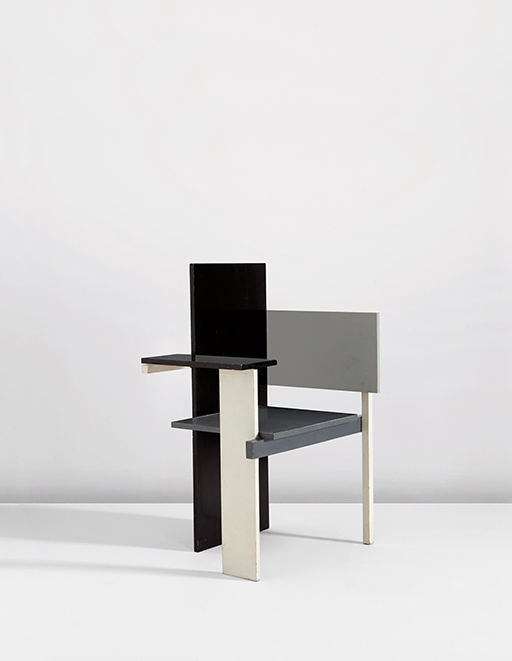
GERRIT RIETVELD (1888-1964)
Gerrit Rietveld (Utrecht June 24, 1888 – June 25, 1964) learned from a young age the art of furniture making in his father’s workshop. Later on he developed his skills in architectural drawing and later architecture through additional training courses, which brought him in contact with members of art movement De Stijl such as Robert van ‘t Hoff, Bart van der Leck and Theo van Doesburg.
Rietveld developed into an artist with a strong vision, his architecture and furniture designs are world famous. His Red-Blue chair, Zig-Zag chair, the Crate Furniture and the Press Room Chair are now real design classics that are here to stay in museums and the modern interior.



ICONS OF DE STIJL
In 1923 Rietveld starts designing a house with which he will later acquire the greatest fame: the Rietveld-Schröder House. In close consultation with client Truus Schröder, Rietveld incorporates almost all of De Stijl’s principles into architecture. The sober design, the large color areas and the sliding walls in the living room make it an ultramodern home that lets the contrasting landscape come in naturally.
Rietveld’s reputation as a groundbreaking architect is thus definitively established, the Rietveld-Schröder House is now on the UNESCO World Heritage List.



THE GREAT SUCCESS
After the closure of De Stijl in 1931, a difficult period started for Rietveld. Due to crisis and war less was built and he is forbidden to work. In this period, Rietveld does make a large number of furniture designs. After the war he gets more assignments and his great success follows. In the second half of the 1950s he worked on major projects such as the Jaarbeurs in Utrecht, the construction of De Ploeg weaving mill in Bergeijk and the Van Gogh Museum in Amsterdam. In 1958 he designed the famous Press Room Chair for UNESCO in Paris and in the same year he designs the Netherlands Pavilion for the World’s Fair in Brussels.



Designs with a story
In the early days, Rietveld designs a lot of furniture based on an inquisitive thought in which construction, shape or material play an important role. Later, the furniture often emerged as part of the architectural assignments, such as the Steltman chair that he designed for the eponymous jeweler in The Hague.
There is a special story attached to almost every Rietveld design. The stories behind Rietveld’s design classics can be read on our collection page.

